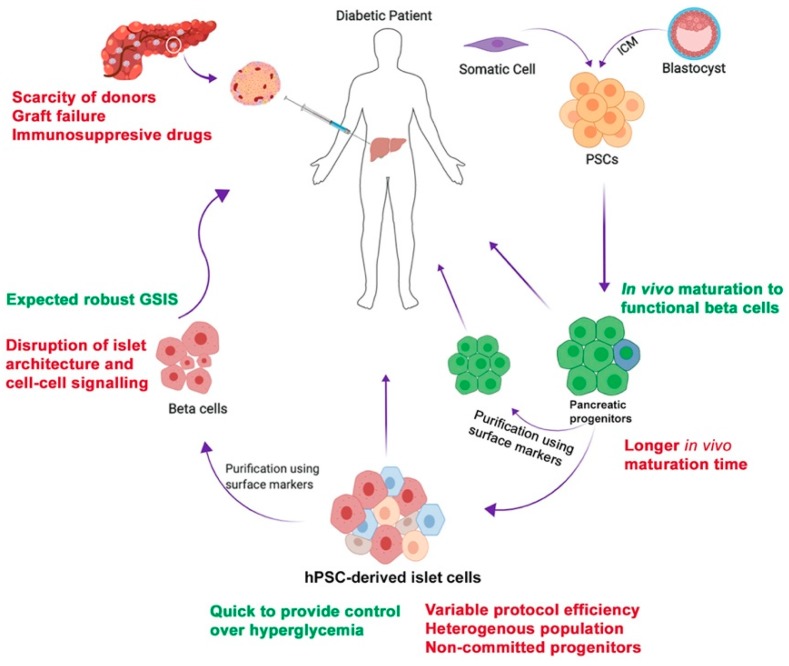Figure 1.
Schematic representation showing the potential use of human pluripotent stem cell (hPSC) for diabetes treatment. hPSCs derived from the inner cell mass (ICM) of the blastocyst and hiPSCs generated from patient somatic cells can be differentiated into pancreatic progenitors that mature in vivo into glucose-responsive beta cells following transplantation. These pancreatic progenitors can be purified as well as encapsulated prior to transplantation. Alternatively, hPSC-derived pancreatic progenitors can be differentiated into pancreatic beta cells in vitro and then transplanted in diabetic patient. In vitro differentiation to beta cells yields non-committed progenitors or polyhormonal and other endocrine cells. Therefore, these hPSC-derived beta cells can be purified using specific cell surface markers, that could disrupt the islet architecture recapitulated during differentiation, that may result in loss of cellular contact-conferred functional properties.

